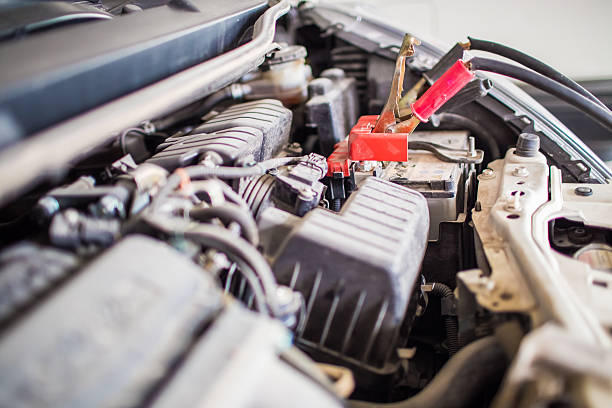
As Autumn winds roll through and the weather gets chillier, there’s no worse feeling than dragging yourself out of bed, only to get to your car and discover the engine won’t start. More often than not, this is due to a dead battery. Your battery becomes more susceptible to drainage as temperatures drop, potentially leaving you out in the cold.
To combat this, here are five easy, cost-efficient ways to help ensure your battery is still alive and kicking by the time next spring rolls around:
1. Avoid Short Drives
It may seem counterintuitive, but letting your battery run for frequent, short periods of time causes it to deplete faster than it would over the course of a long drive. Simply put, your vehicle isn’t active long enough to let your battery recharge properly when you drive in quick bursts. Starting your car is an arduous task for your battery, and if you’re shutting things down just five to ten minutes later, the battery won’t have a chance to recover and could quickly discharge.
When you’re able to, plan to make longer trips on the highway. By driving longer, you give your battery more of an opportunity to recharge itself. Even if it’s a matter of traveling a few extra miles to the second-nearest grocery store, the slight increase you’ll pay in gas money pales in comparison to what a new battery would cost you.
2. Don’t Remain Parked Too Long
Despite all their comforts and innovations, modern vehicles include an abundance of electronics that could cause problems for your battery without you realizing it. Even when your car is turned off, a small but consistent stream of power is still being used on everything from security systems to keyless entry. This subtle but potentially costly process is called parasitic drain.
If you find yourself in a situation where you’re going to be parked for a sustained duration (i.e., at the airport during a holiday vacation), see if there’s a way to disable as many parasitic drain features as possible while your car remains idle. Even if you’re just staying at home for several days in the winter, consider starting up your car for 20 minutes a day. That way, when you’re ready to get back on the road, your ride will be charged and prepared.
3. Turn Off Electronics Along with Engine
Leaving electronics running after you’ve shut off your engine isn’t healthy for your battery any time of the year, but it’s significantly more dangerous when wintry weather moves in. Whenever you turn off your car, make sure you’re turning off your heating, radio, headlights, and all other electronics along with it. If you find yourself waiting in your car for a while, it’s better for the battery if you keep the engine running.
4. Monitor and Maintain Your Battery More Frequently
Should you find yourself frequently concerned about the state of your battery, investing in a car battery tester may be a good idea. If you’re regularly monitoring the voltage of your battery, you’ll know if there are any imminent signs of depletion.
After each test, make sure your battery is tightly fastened, as vibration (especially in bumpy, rural areas) could lead to internal harm. Likewise, scrub the battery terminals with cold water and a drying cloth if you see any signs of corrosion.
5. Ask for a Helping Hand
If your battery remains uncooperative, a stranger’s jumper cables could be the last line of defense between you and a very bad day. If you adhere to our advice, hopefully it won’t come to this point.
But when all else fails, we’re here for you at Bokman of Wellsville Chevrolet GMC for all your battery service needs. If your engine displays so much as the slightest hesitation at the point of ignition, do not delay – make your way over to us for a diagnosis. From new and pre-owned vehicles to parts and oil changes, Bokman of Wellsville is your one-stop shop for everything you need to stay on the road this Fall.






